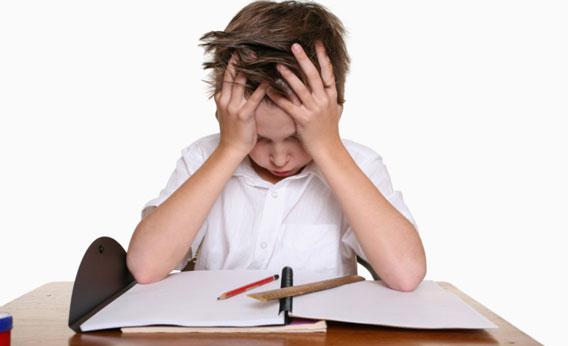Read more from Slate’s special issue on science education and give us your best ideas for raising the next generation of scientists and engineers.
Science, technology, engineering, and math (STEM) education is critical in the high-tech global marketplace that has replaced the industrial economy. Unfortunately, American students perform poorly on international assessments of math and science knowledge. In 2005, Bill Gates said, “When I compare our high schools to what I see when I’m traveling abroad, I am terrified for our workforce of tomorrow.”
One challenge to reforming our educational system is that politicians and voters think they know what’s wrong with American schools—after all, they went through the system themselves. But some of those common-sense opinions are simply wrong, and these false assumptions undermine much of the public debate about how to improve education.
Here are five of the myths that are making it difficult for us to fix science education.
1. American schools have deteriorated in the past 30 or 40 years, as demonstrated by our poor performance on international assessments of math and science achievement. We need to restore American elementary and secondary education to their previous glory.
FACT: The mantra from many educators and policy-makers for a quarter-century has been to lament the decline of American schools. Even the classic 1983 report “A Nation at Risk,” which sounded the alarm about the American education system, says, “What was unimaginable a generation ago has begun to occur—others are matching and surpassing our educational attainments.” But this is a flawed assessment of our past.
The fact that we score poorly now does not mean that our educational system has deteriorated. In fact, it was always bad. Our high school students have always scored at or near the bottom, even as our college and university system was, and is, the best in the world. In a 1965 mathematics assessment, 18 years prior to “A Nation at Risk,” the United States placed last among all nations tested. The other nations achieved mean scores from 36.4 to 21.6. The U.S. score: 13.8.
Incorrectly believing that American students used to excel hampers our reform efforts. It makes the challenge of improving STEM education seem easier than it is.
2. If a student performs poorly, it’s because she doesn’t have the aptitude for math and science.
FACT: Perhaps the most important research finding to emerge from international comparisons of math and science achievement is this: When American students struggle, teachers and parents attribute this failure to low aptitude. When students in many top-ranked nations, like Japan, don’t perform well, teachers and parents conclude that they have not worked hard enough. Aptitude has been overrated as a factor in achievement. Hard work and practice are more important.
3. Curriculum reform is the key to higher achievement in math and science.
FACT: Ever since Sputnik, the federal government and other funders have invested huge sums in curriculum reform. The best-known such effort was the School Mathematics Study Group effort, aka the “new math.” The idea was to teach schoolchildren theoretical math concepts, like set theory. But the students couldn’t get it, and their parents could not help them. The new math was about as successful as New Coke.
Since the 1950s, there have been a number of other massive, expensive curriculum reform efforts about physics, biology, and calculus, among other subjects. Unfortunately, these reforms have not substantially improved the achievement of American students
Better that your child should be taught by an exciting, creative teacher using an outdated text than by a boring or hostile teacher using the latest curriculum.
4. OK, well-prepared teachers are important. We need a massive recruiting drive to attract the top college graduates into teaching.
FACT: We need more excellent teachers, and attracting top students into STEM teaching helps. The problem, however, is not recruiting people into teaching. The problem is keeping them in teaching. Teachers work very hard. They are not paid enough. They endure great stress daily. These factors drive many out of the profession. A study by the National Education Association found that the five year dropout rate for new teachers is 50 percent.
It’s like pouring water into a sieve. We must develop and implement effective strategies for retaining the talented people who choose this profession. Most important is professional development, the process of renewing and upgrading teacher knowledge and competencies.
5. Only the top students should consider becoming math and science teachers. No C students allowed.
FACT: Excellent teaching requires more than simply possessing knowledge. You have to know how to communicate this knowledge. You have to remember what it was like not to understand the concept. This is why, sometimes, C students can teach others better than A students. They remember their initial confusion as they struggled to master the concept. The A students “got it” immediately and often have a hard time relating to students who don’t get it.
I am not suggesting that we favor C students over A students. We need talented teachers who thoroughly understand the subject matter. But occasionally a C student becomes an excellent teacher—and therein lies the last lesson:
Fostering student achievement ultimately is not about who the teacher is; it’s about how he or she teaches.
Also in Slate’s special issue on science education: Fred Kaplan explains why another “Sputnik moment” would be impossible; Philip Plait explains why he became the “Bad Astronomer”; Paul Plotz describes how almost blowing up his parents’ basement made him a scientist; Tom Kalil says that the Obama administration is using the Make movement to encourage science education; and Dana Goldstein explains why you should make your daughter play video games. Also, share your ideas for fixing science education in the Hive. This article arises from Future Tense, a joint partnership of Slate, the New America Foundation, and Arizona State University.
